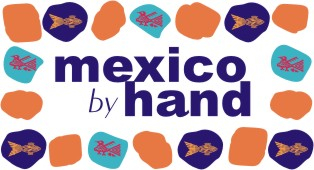At the beginning of 2023 I sat down and wrote Mexico By Hand’s “Mission Statement” going forward. I frequently receive invitations to sell at events, and it seems that customer requests are coming to me more often lately. I decided I need to re-focus and not allow others to distract from how I really want to spend my time and energy. So I came up with the following for my goals:
- Support artisans in marketing and selling their work.
- Educate Americans about the talent and creativity of artisans in Michoacán.
- Do work that feels right and enriches my spirit.
- Acquire pieces that please customers and makes sense for the business. Is it worth the effort? Will it meet the aforementioned objectives?
But one issue that I didn’t think about then, and I now need to consider, is what is happening with the cost of doing business. Keeping Mexico By Hand sustainable for us is also important. It’s implied in number 4, when I say “worth the effort” and “makes sense for the business”, but to be clear about it—I don’t want to lose money.
For years we have kept our prices pretty steady. The artisans, most notably the potters, haven’t raised their prices until a few years ago. The global pandemic and resulting drop in tourism had something to do with it, but also we kept hearing about the rising cost of gas (for their kilns) and lead-free glazes. But the most notable increase since we started the business has been the price of textiles. Every year I’ve had to adjust to the new prices, and by my estimation, in the last 10 years, the cost of a hand embroidered blouse in Michoacán has doubled. I’m being told that cotton thread is not only expensive, it’s difficult for the artisans to get.
For almost twenty years I’ve bought cotton napkins and rebozos handwoven by women in Turícuaro. We’ve placed large orders of rebozos for museums, and napkins for event planners. I also regularly buy them from artisans selling on the street or at fairs. This week I wanted to place an order for napkins for a customer and realized that between the artisan price and the bad exchange rate for us, my cost for a napkin has more than tripled! I haven’t raised my price in all these years, but that’s going to have to change! Either that, or I stop carrying them.
The situation with the napkins has brought into focus the issue of pricing. I did not state in my “mission” one other goal that is important to me. I have always tried to keep our prices fair and affordable. As public school teachers, Doug and I didn’t have a lot of extra money for buying art. We rarely bought something at a shop or crafts fair, and most of our early acquisitions of folk art were either given to us or we bought for very little while traveling. I understand that not everyone who loves Mexican crafts and folk art can afford to buy it. I know the pain of falling in love with a piece and having to walk away. Or not even allowing myself to look, because I don't have the money. And for that reason, I have tried to price our art as low as possible, in an attempt to make our merchandise accessible to folks who aren’t wealthy. A lot goes into our pricing: the artisan’s price, transportation costs, the exchange rate (which fluctuates constantly), potential loss due to breakage, and how difficult the item is to get. To keep my brain from hurting, I have developed a general formula for setting prices. I take the above factors under consideration and then I might make adjustments after observing customer demand and also checking out the competition. The thing is, we don’t have much competition. With a few exceptions, we’re the only ones in the U.S. selling work by Michoacán artisans. When I take a look at what people are paying for mass-produced T-shirts from China — our charging $95 for a one-of-a-kind hand embroidered blouse (personally selected by me) is not excessive. But unfortunately, we will probably have to charge more in the future for the reasons I stated above. I hope that customers will understand and continue to support our work, realizing that every purchase helps feed a family in Mexico and makes it possible for this beautiful traditional art to survive.
